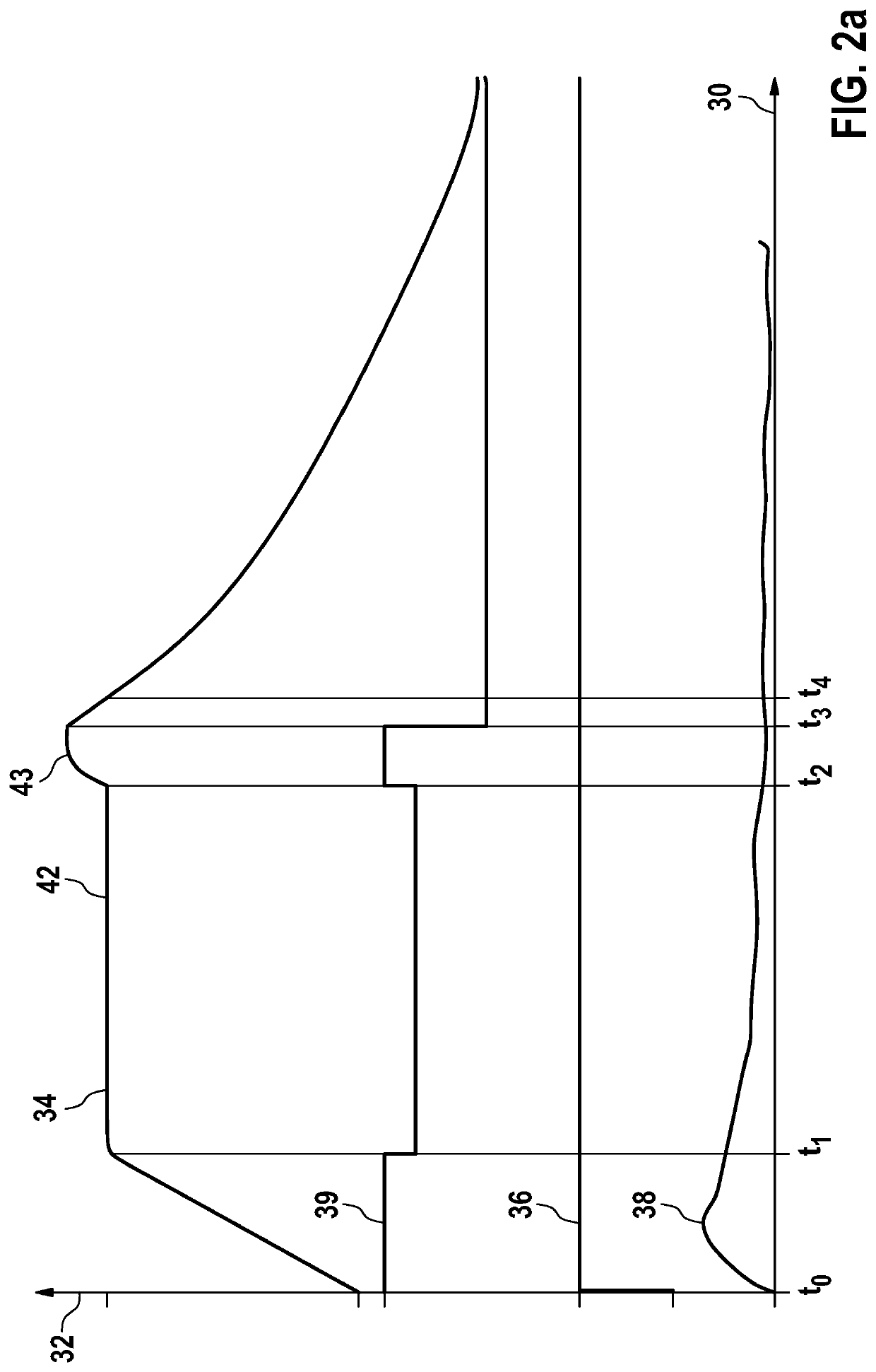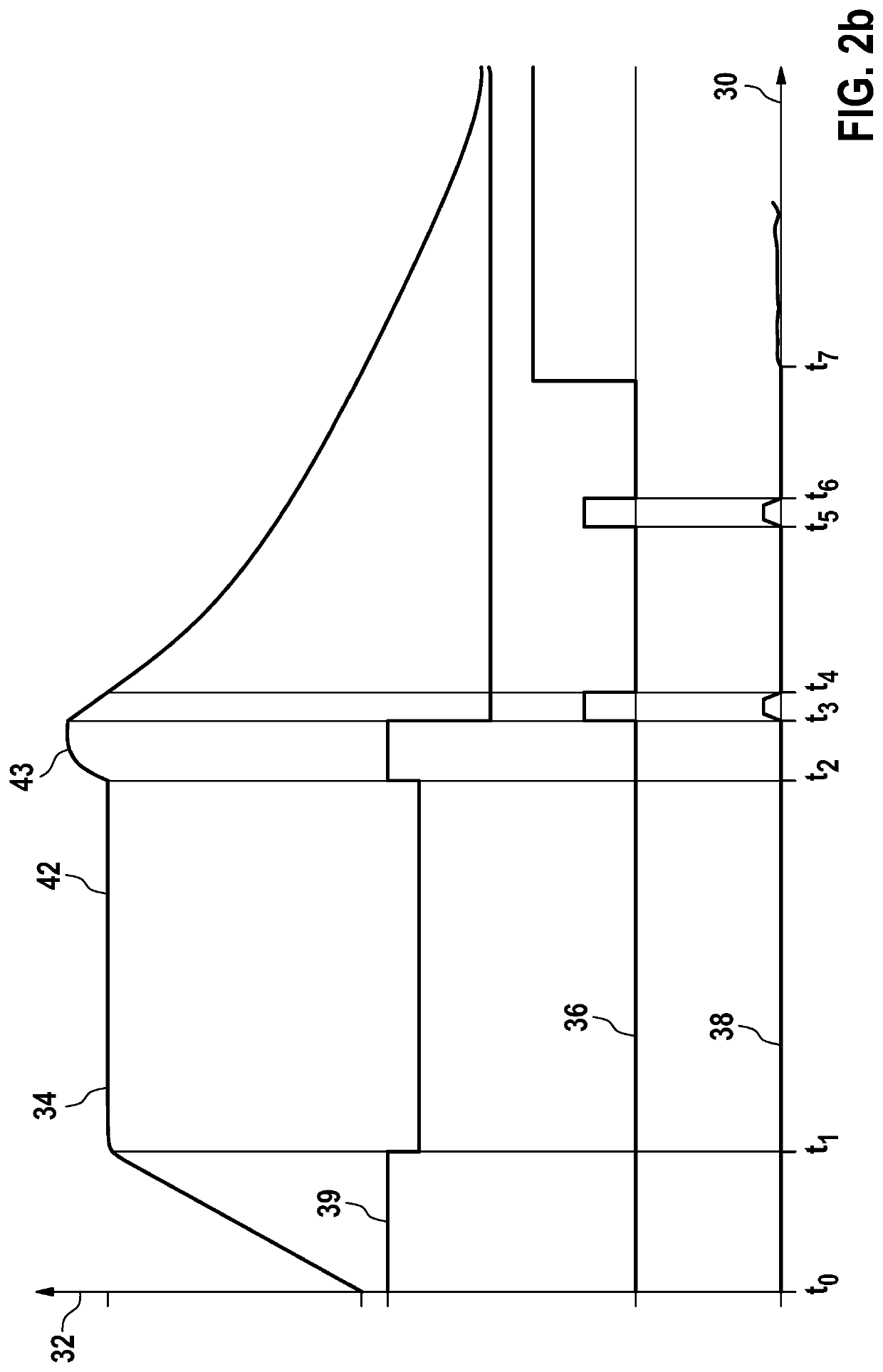Method for assessing the operatability of a sensor for detecting soot
a sensor and operation method technology, applied in the field of methods and apparatus for detecting soot particles, can solve the problems of short time-consuming and laborious, high current results, and inaccuracy of measurement, and achieve the effect of increasing the reliability of the evaluation of the functionality of the sensor
- Summary
- Abstract
- Description
- Claims
- Application Information
AI Technical Summary
Benefits of technology
Problems solved by technology
Method used
Image
Examples
Embodiment Construction
[0019]FIG. 1 shows a sensor 10 for detecting soot in a gas flow, for example in an exhaust gas flow of an internal combustion engine, which serves for installation in an exhaust system of a motor vehicle. Sensor 10 is disposed, for example, downstream from a soot filter of a motor vehicle having a diesel internal combustion engine.
[0020]Sensor 10 encompasses a plate-shaped carrier layer 12 that is produced at least in part from an electrically insulating material, for example from a ceramic such as aluminum oxide. Integrated into carrier layer 12 is a resistance heating element 14 that is connectable via contacts 16 to a suitable voltage source and serves to burn off from sensor 10 particles, such as soot particles, that may have been deposited.
[0021]Arranged on carrier layer 12 is a plate-shaped substrate 18 that is produced at least in part from an electrically insulating material, for example a ceramic such as aluminum oxide. A structure made up of two measurement electrodes 20 i...
PUM
 Login to View More
Login to View More Abstract
Description
Claims
Application Information
 Login to View More
Login to View More - R&D
- Intellectual Property
- Life Sciences
- Materials
- Tech Scout
- Unparalleled Data Quality
- Higher Quality Content
- 60% Fewer Hallucinations
Browse by: Latest US Patents, China's latest patents, Technical Efficacy Thesaurus, Application Domain, Technology Topic, Popular Technical Reports.
© 2025 PatSnap. All rights reserved.Legal|Privacy policy|Modern Slavery Act Transparency Statement|Sitemap|About US| Contact US: help@patsnap.com



